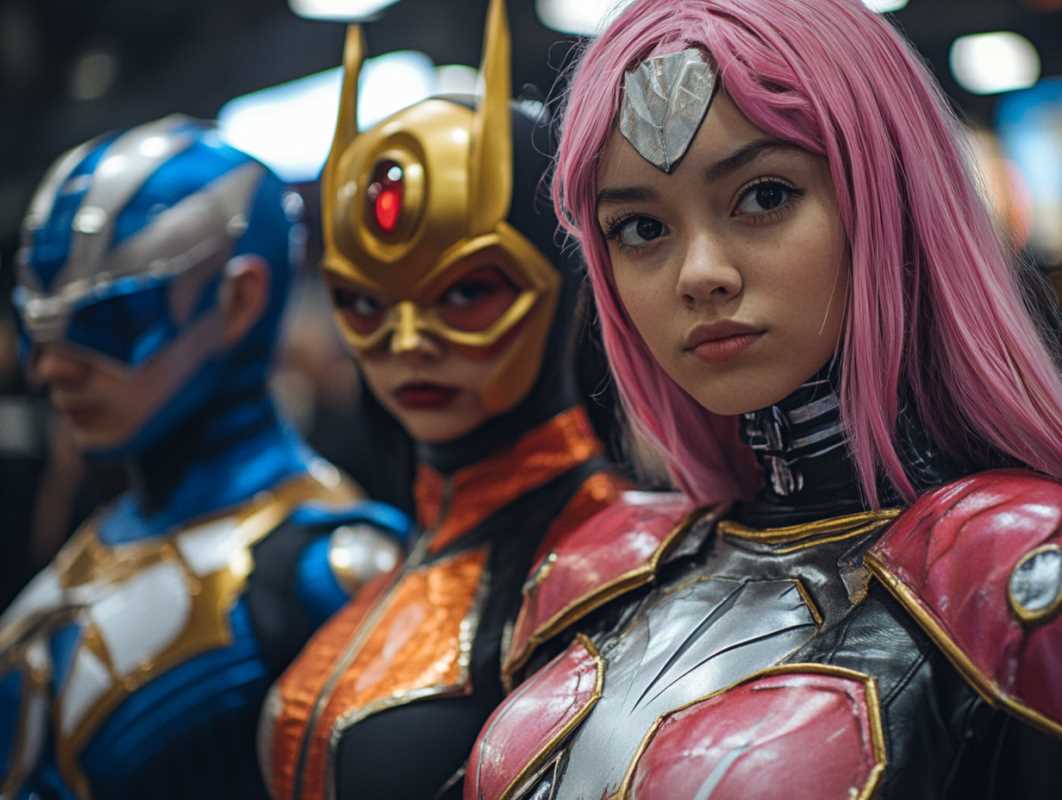Cosplay, short for “costume play,” has evolved from a niche hobby into a vibrant global phenomenon. Originating in the 20th century, cosplay began as a way for fans of science fiction and fantasy to dress as their favorite characters during conventions. Over the decades, it has grown into a multifaceted art form that bridges the gap between fandom and performance.
Today, cosplay is much more than dressing up; it’s a dynamic cultural movement that influences pop culture, media, and even fashion. With its intricate costumes, elaborate makeup, and immersive role-playing, cosplay celebrates creativity and passion while redefining how fans interact with their favorite franchises.
A Platform for Personal Expression
One of the most powerful aspects of cosplay is its ability to serve as a medium for personal expression. Cosplayers transform themselves into characters from movies, TV shows, anime, comics, and video games, but they rarely stop at simple replication. Instead, they add their own interpretations, modifications, and personal touches.
Cosplay allows fans to step into the shoes of their favorite heroes, villains, or sidekicks and experience the world from their perspective. For many, this is an empowering act of self-expression. By embodying characters with traits they admire—strength, resilience, or cunning—cosplayers often find confidence and camaraderie within the community.
The inclusive nature of cosplay has also fostered a culture in which fans from diverse backgrounds can participate. Genderbent cosplay, in which cosplayers reinterpret characters as a different gender, has become particularly popular. Similarly, cosplayers of all body types, races, and ages have embraced the art form, proving that anyone can become their favorite character.
Cosplay as a Driving Force in Pop Culture
The rise of cosplay has profoundly impacted pop culture, reshaping how media is consumed and celebrated. Major conventions like San Diego Comic-Con and Anime Expo have become cultural landmarks, drawing thousands of cosplayers who transform these events into colorful celebrations of fandom.
For entertainment franchises, cosplayers are more than just fans; they are ambassadors. By investing time and energy into recreating costumes, cosplayers demonstrate a level of dedication that generates buzz and visibility for the characters and media they portray. Photos and videos of cosplayers often go viral, introducing characters to wider audiences and even reigniting interest in older franchises.
Many companies have begun designing characters with cosplayers in mind in response to this enthusiasm. Complex yet achievable costumes with iconic visual elements are becoming more common in games, movies, and TV shows. Developers and filmmakers recognize that cosplayers can help sustain a franchise’s relevance long after its initial release.
Cosplay has influenced how pop culture is marketed. Studios now host cosplay contests, feature fan-made costumes in promotional materials, and even collaborate with prominent cosplayers to boost their projects. This symbiotic relationship underscores the growing influence of cosplay on the entertainment industry.
Crossing Over into Media and Fashion
Cosplay’s impact extends beyond conventions and fan communities - it’s shaping mainstream media and fashion as well. Social media platforms like Instagram, TikTok, and YouTube have amplified the reach of cosplay, turning dedicated cosplayers into influencers and performers with massive followings.
Some cosplayers have transitioned into professional careers in acting, costume design, and even character modeling for video games and movies. Their expertise in crafting realistic and detailed costumes has made them valuable assets for Hollywood productions and marketing campaigns.
The influence of cosplay can also be seen in the fashion industry. Designers often draw inspiration from the bold, imaginative aesthetics of cosplay, incorporating elements like fantasy armor, dramatic silhouettes, and intricate embroidery into their collections. High-profile collaborations between fashion brands and media franchises, such as luxury lines inspired by superhero films or anime, reflect this blending of cosplay and couture.
Even streetwear has felt the influence of cosplay, with fans incorporating subtle nods to their favorite characters into everyday outfits. This trend, sometimes called “closet cosplay” or “bounding,” highlights how cosplay culture has seeped into daily life, making fandom a part of personal style.
The Role of Social Media in Cosplay’s Growth
Social media has revolutionized cosplay, propelling it from local conventions to a global stage. Platforms like Instagram, TikTok, and Twitter allow cosplayers to share their creations with audiences around the world, inspiring others and building a sense of community.
TikTok, in particular, has become a hub for cosplayers to showcase their costumes, perform skits, and lip-sync to iconic lines. The platform’s emphasis on short-form video has introduced cosplay to younger audiences, fueling its growth among Gen Z.
For many cosplayers, social media also serves as a portfolio and networking tool. Popular cosplayers can attract sponsorships, collaborations, and opportunities to work with entertainment studios or attend conventions as special guests. These opportunities have transformed cosplay into a viable career path for some.
However, the rise of social media has also brought challenges. The pressure to create new content frequently and maintain a polished online presence can be overwhelming. The emphasis on “likes” and “followers” has led to debates about the commercialization of cosplay and the balance between artistic passion and professional branding.
Cosplay and Representation in Media
Cosplay has played a significant role in conversations about diversity and representation in media. Cosplayers challenge traditional norms about who can portray certain roles by reimagining characters from various franchises.
For example, cosplayers of color have reclaimed traditionally white characters, while LGBTQ+ cosplayers have brought visibility to queer interpretations of beloved heroes and villains. This inclusivity has sparked broader discussions about representation in the media itself, pushing creators to design characters that reflect the diversity of their audience.
Cosplay has also empowered fans to create original characters or reinterpret existing ones in unique ways. These “OC” (original character) cosplays showcase the creativity and storytelling abilities of the community, often leading to the creation of entirely new narratives inspired by existing franchises.
This blending of fandom and activism has made cosplay a force for change, encouraging media companies to consider how their stories and characters impact audiences.
Challenges and Criticisms in the World of Cosplay
While cosplay is often celebrated as a welcoming and creative space, it is not without its challenges. Issues like harassment, gatekeeping, and cultural appropriation have sparked important conversations within the community.
Female cosplayers, in particular, often face scrutiny and objectification, with their costumes subjected to unwarranted criticism. Similarly, gatekeeping behavior - where some fans question the “authenticity” of others based on costume accuracy or fandom knowledge - can discourage newcomers from participating.
Cultural appropriation has also been a topic of debate. When cosplaying characters inspired by cultures outside their own, participants must navigate how to show respect and avoid perpetuating stereotypes. This ongoing dialogue underscores the need for sensitivity and awareness in cosplay.
Despite these challenges, many cosplayers and organizations are working to foster a more inclusive and supportive community. Conventions are implementing stricter policies against harassment, and online groups provide safe spaces for cosplayers to share their work and connect.
The Future of Cosplay and Pop Culture
As cosplay continues to grow, its influence on pop culture and media shows no signs of slowing. The art form’s ability to adapt and innovate ensures its relevance in an ever-changing cultural landscape.
Emerging technologies like 3D printing, augmented reality, and virtual reality are likely to shape the future of cosplay. These tools can simplify costume creation and enhance the immersive experience of embodying a character. For example, VR could allow cosplayers to “step into” fully realized digital worlds as their chosen personas.
Meanwhile, the entertainment industry’s embrace of fan culture will likely deepen. Collaborations between studios and cosplayers could lead to more inclusive and fan-driven storytelling, blurring the line between creators and audiences.
At its core, cosplay celebrates creativity, fandom, and individuality. Through intricate costumes, heartfelt performances, or meaningful conversations about representation, cosplayers continue to leave an indelible mark on pop culture and media.
- Celebrates creativity and self-expression
- Drives engagement with media franchises
- Shapes fashion and mainstream aesthetics
- Raises conversations about diversity and inclusion
- Continues to evolve with emerging technologies
Cosplay has grown from humble beginnings into a cultural powerhouse, redefining the relationship between fans, media, and society. By embracing the transformative power of costume and performance, cosplayers have turned their passion into a platform for connection, creativity, and change.
 (Image source: Midjourney)
(Image source: Midjourney) 





